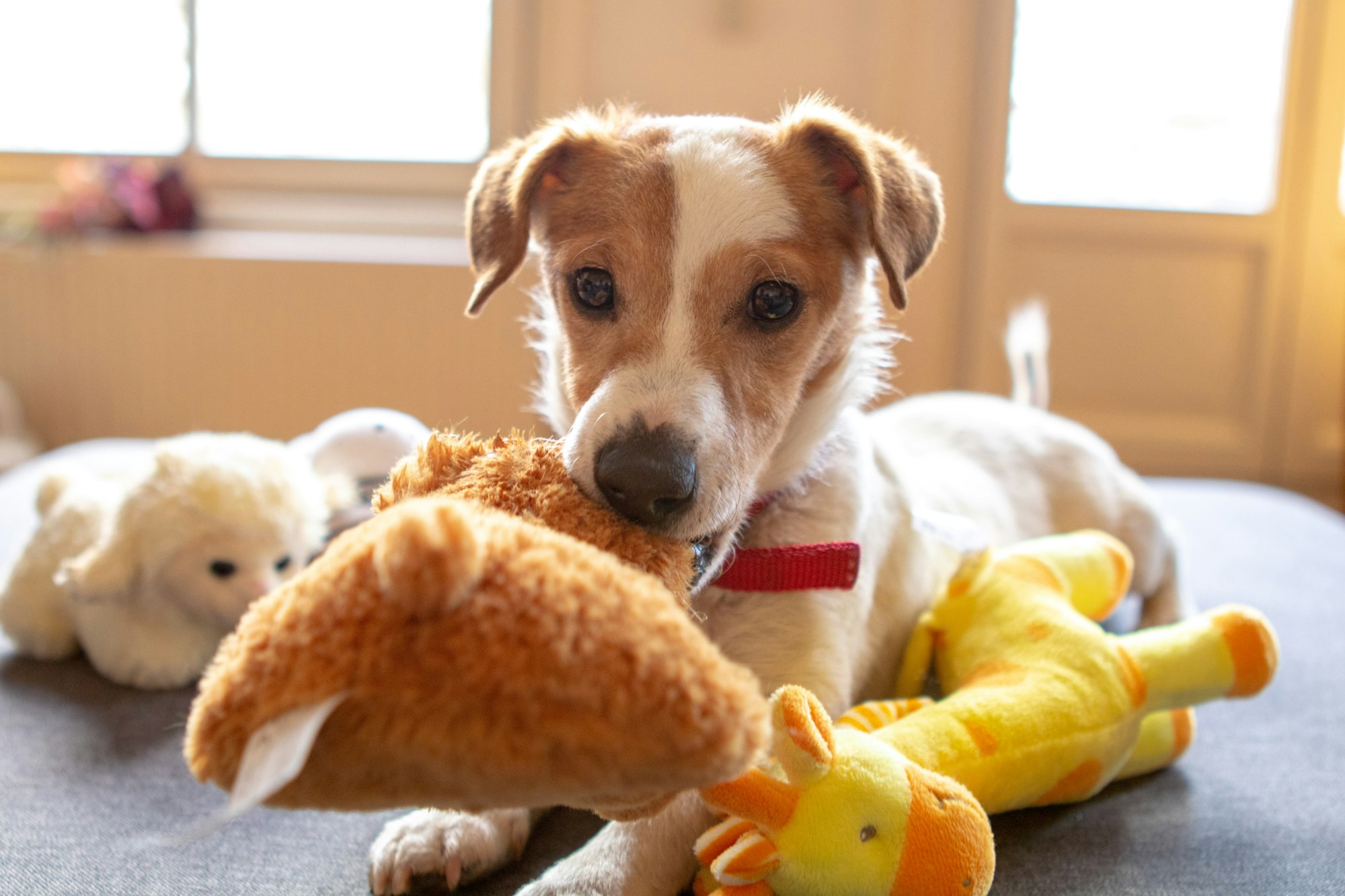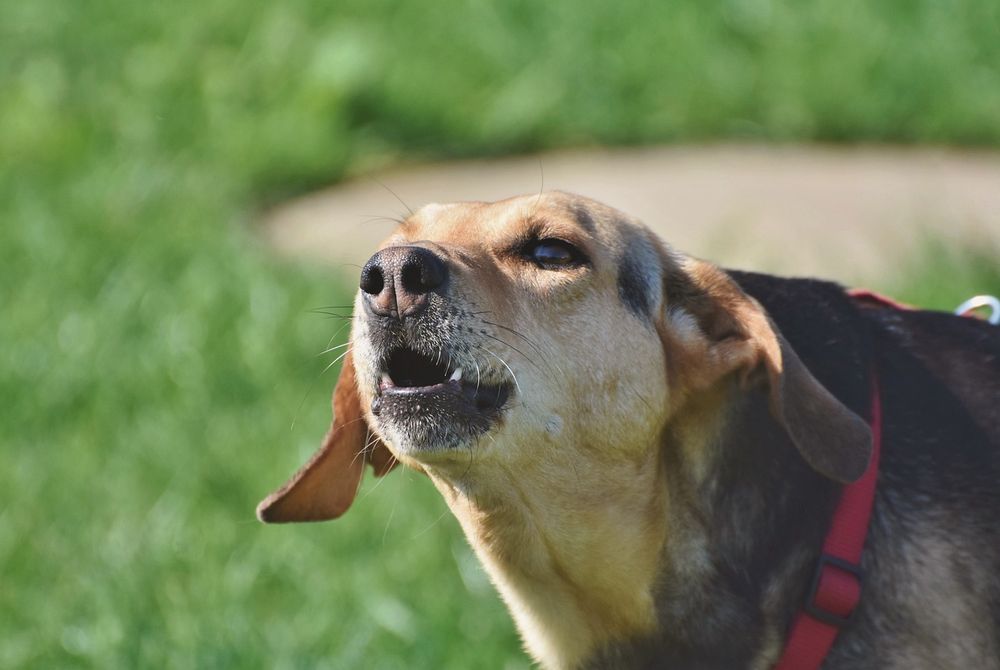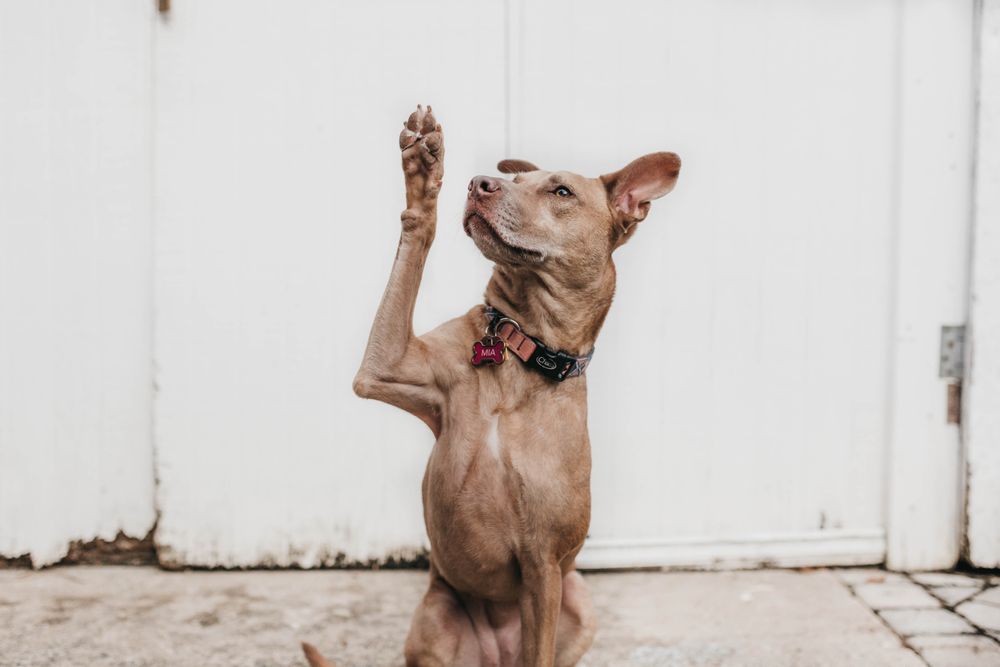It's very normal for young dogs, especially puppies, to explore the world with their mouth in much the same way as children explore the world with their hands. While mouthiness is totally normal, this article will help you understand:
- Mouthing and bite inhibition
- How to teach bite inhibition to your dog
- Why it’s important to teach your dog how to properly use their mouth
- What other pet parents are asking about dogs being mouthy
What is mouthing?
Mouthing is a term used to describe play biting and occurs when a dog puts their mouth around something, but doesn’t bite down. Mouthing is particularly common in puppies. While mouthing can be annoying to humans, it’s not an aggressive behavior.
What is bite inhibition and how to teach it to your dog?
Bite inhibition is a dog’s ability to control the force of their jaw. A puppy or adult dog who hasn’t learned bite inhibition won’t recognize the sensitivity of human skin, and will bite hard even when playing.
The best way for puppies to learn bite inhibition is from playing with other dogs or puppies. When a group of puppies play, there is a lot of biting involved. Inevitably, a pup may bite a playmate too hard, causing the playmate to yelp and sometimes stop playing. This is a teaching moment for the pup, who can see that their bite hurts their playmate and will learn to adjust. The more appropriate puppy play your dog gets, the less they will try to treat your hands and feet like play things. If your dog spends a lot of their energy playing with other puppies, they’ll feel less motivated to play roughly with you.
In addition to playing with other dogs, you can teach your dog how to use their mouth properly by:
- Managing your dog’s energy. Mouthiness is often the result of pent up energy. To help them burn energy, ensure your dog has ample opportunities for physical exercise. Furthermore, incorporate work-to-eat toys or puzzle mats into your dog’s routine. These will help your dog burn mental energy and learn to use their mouth appropriately. A few work-to-eat toys we love are the Fun feeder, KONG classic toy, and the Toppl.
- Turning biting into an off switch. Biting is usually a self-reinforcing activity; the more your dog bites, the better they’ll get at biting and the more they’ll enjoy it. Often, we inadvertently reinforce puppy biting by responding with noises and attention that your dog will interpret as rewarding. For this reason, time-outs are a much more effective way to curb mouthing. This is technically a form of punishment, as you’re trying to discourage a behavior from happening again by ending the fun and taking away your attention. As with any kind of punishment, it should only need to be used a handful of times in order to work.
- Giving good chew toys. Make sure your dog has plenty of great things to chew on. Bully sticks and yak chews are great for big chewers. Frozen carrots, ice cubes, and pig’s ears are also great alternatives for chew toys. Monitor chewing whenever possible, especially if your dog is chewing anything where a piece could possibly break off and get lodged in their throat or digestive tract.
- Playing games where your dog can use their mouth appropriately. Rather than wrestling or rough play with human hands, play non-contact activities with your dog, such as fetch and tug-of-war. Once your dog can play tug safely, keep tug toys easily accessible. If your dog starts to mouth you, immediately redirect them to the tug toy. Ideally, they’ll start to anticipate and look for a toy when they feel like mouthing.

The importance of teaching your dog how to properly use their mouth
Teaching your dog how to properly use their mouth is vital for their relationship with other dogs and humans. A dog who hasn’t learned how to properly use their mouth may unknowingly injure you, a friend, family member, or another dog.
Frequently asked questions about dogs being mouthy
Why do dogs get mouthy when excited?
Dogs often get mouthy when they want you to play with them. To deter this behavior, do not play with your dog when they’re mouthing you. Instead, wait for them to stop mouthing and then start playing. This tactic will teach your dog that sitting quiet, and not mouthing, leads to what they want…play!
How can you tell if your dog is play biting vs being aggressive?
Your dog is play biting if their mouth is around your hand, or another body part, but they aren’t biting down. If your dog is biting down, they likely haven’t learned bite inhibition. To determine whether your dog is aggressive biting, evaluate their biting in relation to their body language. Areas to pay attention to include your dog’s:
- Tail. A loose tail or propeller-like wag usually indicates your dog is feeling friendly. On the other hand, a stiff or high tail may indicate that your dog is onguard.
- Ears. Ears held in a natural position typically indicate that your dog is relaxed. On the other hand, ears that are held up and forward may indicate a willingness to fight or general aggression towards the other dog.
- Eyes. “Soft Eyes,” a warm, sometimes squinty look, usually means your dog is friendly and willing to interact. On the other hand, “Hard Eyes,” a cold, icy look usually associated with a direct stare, usually indicates that your dog may be prepared to fight or aggress forward.
- Mouth. A mouth that is slightly open, with no teeth exposed, generally means your dog is relaxed. Whereas a frightened dog may pull the corners of his lip back (“lip long”) and a dog that needs space may pull their lips back, bare their teeth and wrinkle their muzzle. This action is designed to intimidate the other dog from moving closer.




